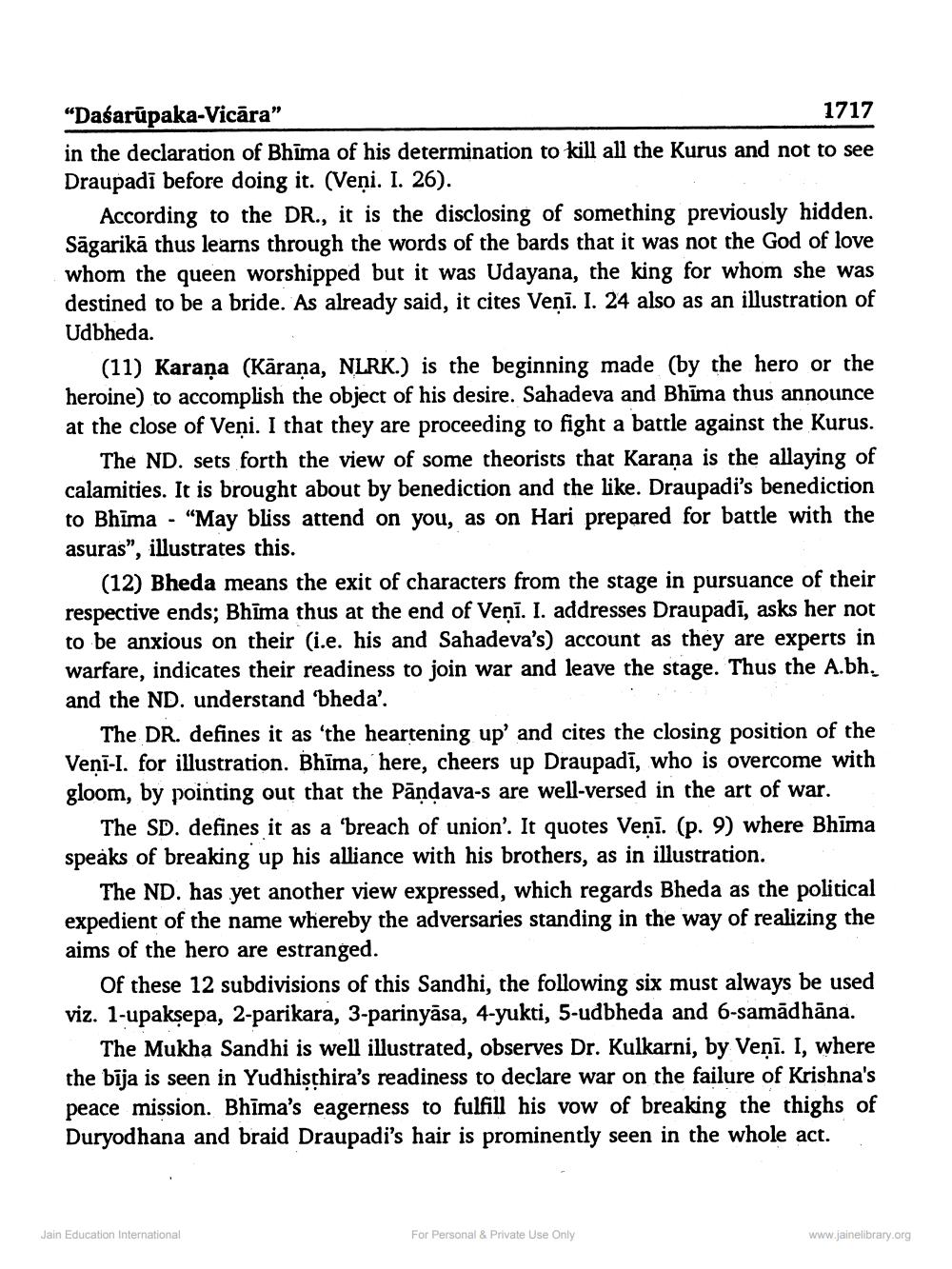________________
“Dasarūpaka-Vicāra"
1717 in the declaration of Bhima of his determination to kill all the Kurus and not to see Draupadi before doing it. (Veņi. I. 26).
According to the DR., it is the disclosing of something previously hidden. Sagarikā thus learns through the words of the bards that it was not the God of love whom the queen worshipped but it was Udayana, the king for whom she was destined to be a bride. As already said, it cites Veni. I. 24 also as an illustration of Udbheda.
(11) Karaņa (Karana, NLRK.) is the beginning made (by the hero or the heroine) to accomplish the object of his desire. Sahadeva and Bhīma thus announce at the close of Veni. I that they are proceeding to fight a battle against the Kurus.
The ND. sets forth the view of some theorists that Karana is the allaying of calamities. It is brought about by benediction and the like. Draupadi's benediction to Bhīma - "May bliss attend on you, as on Hari prepared for battle with the asuras”, illustrates this.
(12) Bheda means the exit of characters from the stage in pursuance of their respective ends; Bhīma thus at the end of Veni. I. addresses Draupadi, asks her not to be anxious on their (i.e. his and Sahadeva's) account as they are experts in warfare, indicates their readiness to join war and leave the stage. Thus the A.bh. and the ND. understand 'bheda'.
The DR. defines it as 'the heartening up and cites the closing position of the Veni-I. for illustration. Bhīma, here, cheers up Draupadi, who is overcome with gloom, by pointing out that the Pāņdava-s are well-versed in the art of war.
The SD. defines it as a 'breach of union'. It quotes Venī. (p. 9) where Bhīma speaks of breaking up his alliance with his brothers, as in illustration.
The ND. has yet another view expressed, which regards Bheda as the political expedient of the name whereby the adversaries standing in the way of realizing the aims of the hero are estranged.
Of these 12 subdivisions of this Sandhi, the following six must always be used viz. 1-upakṣepa, 2-parikara, 3-parinyāsa, 4-yukti, 5-udbheda and 6-samādhāna.
The Mukha Sandhi is well illustrated, observes Dr. Kulkarni, by Veni. I, where the bija is seen in Yudhisthira's readiness to declare war on the failure of Krishna's peace mission. Bhīma's eagerness to fulfill his vow of breaking the thighs of Duryodhana and braid Draupadi's hair is prominently seen in the whole act.
Jain Education International
For Personal & Private Use Only
www.jainelibrary.org




